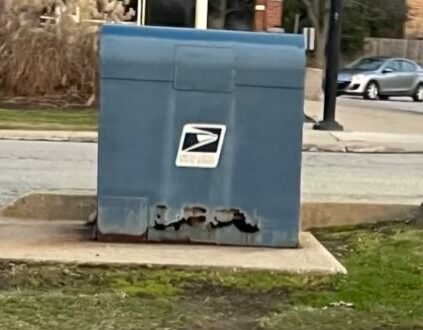Mail Theft Continues to be Priority for the Government — Is Privatizing Mail the Solution?
- Commercial mail is predicted to play a more prominent role in the delivery ecosystem
- State-level attention to postal security is not as effective as federal mail theft laws
- Changes to mail logistics under the Postal Service's 10-year plan are raising concerns about delayed delivery to rural areas
Since the pandemic, the post office has garnered much attention from the government -- both positive and negative. As we've noted previously, the government is pushing several different bi-partisan legislation to protect mail and mail carriers. And, as Postmaster General DeJoy continues a low-moving push to deploy counter measures against criminals, new avenues are making waves.
Bob Levi, the National Association of Postal Supervisors Director of Legislative & Political Affairs, recently came across a short article on the Forbes Magazine website that alarmed him.

[The article] seemed to embrace the prospect that commercial mail receiving agencies (e.g., the UPS Store, FedEx, Kinkos, etc.) will play a more prominent role in the future of mail service. This alarming, private-sector expectation should send a shock wave down the postal spine.
It would appear for-profit postal players see lucrative opportunities resulting from reduced mail safety and security, decreased on-time First-Class performance and declining physical retail postal accessibility. While these factors always have been on the periphery, they now are becoming more prominent.
Is Federal Attention Enough?
As mail theft and robberies against postal employees have increased, the good news is that the legislations surrounding mail theft and mail carrier robberies is receiving bi-partisan support.
However, there is bad news as well:
In fact, on Jan. 30, the Maryland House of Delegates was so frustrated by the increases that its Judiciary Committee conducted a hearing on legislation to make mail theft a felony at the state level.
Regrettably, the Postal Service has appeared to abandon its most effective means of mail security, employee protection and postal-crime deterrence—the appropriate deployment of postal police officers. Relegating postal crime prevention and law enforcement to states and localities is misguided.
As an example, Mr. Levi cites the fact that most federal mail theft laws are more severe than existing state laws:
Federal laws cover theft from any authorized mail depository, while state laws only apply to a mailbox. Also, federal law can aggregate the value of stolen mail or separate mail crimes; federal charges are heard in federal court.
- The penalty for being convicted in federal court carries up to five years in prison and $250,000 in fines.
- Most states limit jail terms to less than one year and a $10,000 fine.
It's also noted that federal law contains specific provisions making it a federal crime to assault a government employee in the performance of their official duty or interference with the employee’s duty. Postal employees are included among the covered employees.
Restoring the postal police force’s authority to enforce the law on and off postal property is a major component of securing the mail, protecting postal property and safeguarding postal employees. These are the reasons NAPS will be promoting H.R. 3005 and S. 3356, the Postal Police Reform Act, at LTS.
A National Priority
Given the prevalence of postal theft by persons looking to snatch checks -- a national problem, no question -- it's vital to do whatever possible to secure mail delivery on the local and federal level. We've relayed news earlier of arrow keys (which allow entry into public mail receptacles) being stolen across the country.
Frank Albergo, National President of the Postal Police Officers Association (PPOA), calls arrow key security "atrocious." "I wouldn't even use the word 'security.' I don't think there's any security," he states. "I think if you want to get an arrow key, then you can get one."
Banks can better protect themselves and their customers by increasing their check fraud detection capabilities -- stopping fraudsters from being successful and deterring them from duplicating efforts.
In order to detect alterations and counterfeit checks, banks must deploy AI and machine learning technologies such as image forensic AI. This enables banks to interrogate the images of checks that are deposited, identifying indicators of alterations to a check or issues with the check stock and signatures. By deploying these technologies, banks will not only contribute to curbing the mail theft trend, but also provide assurance to their customers when they question whether their checks are safe.